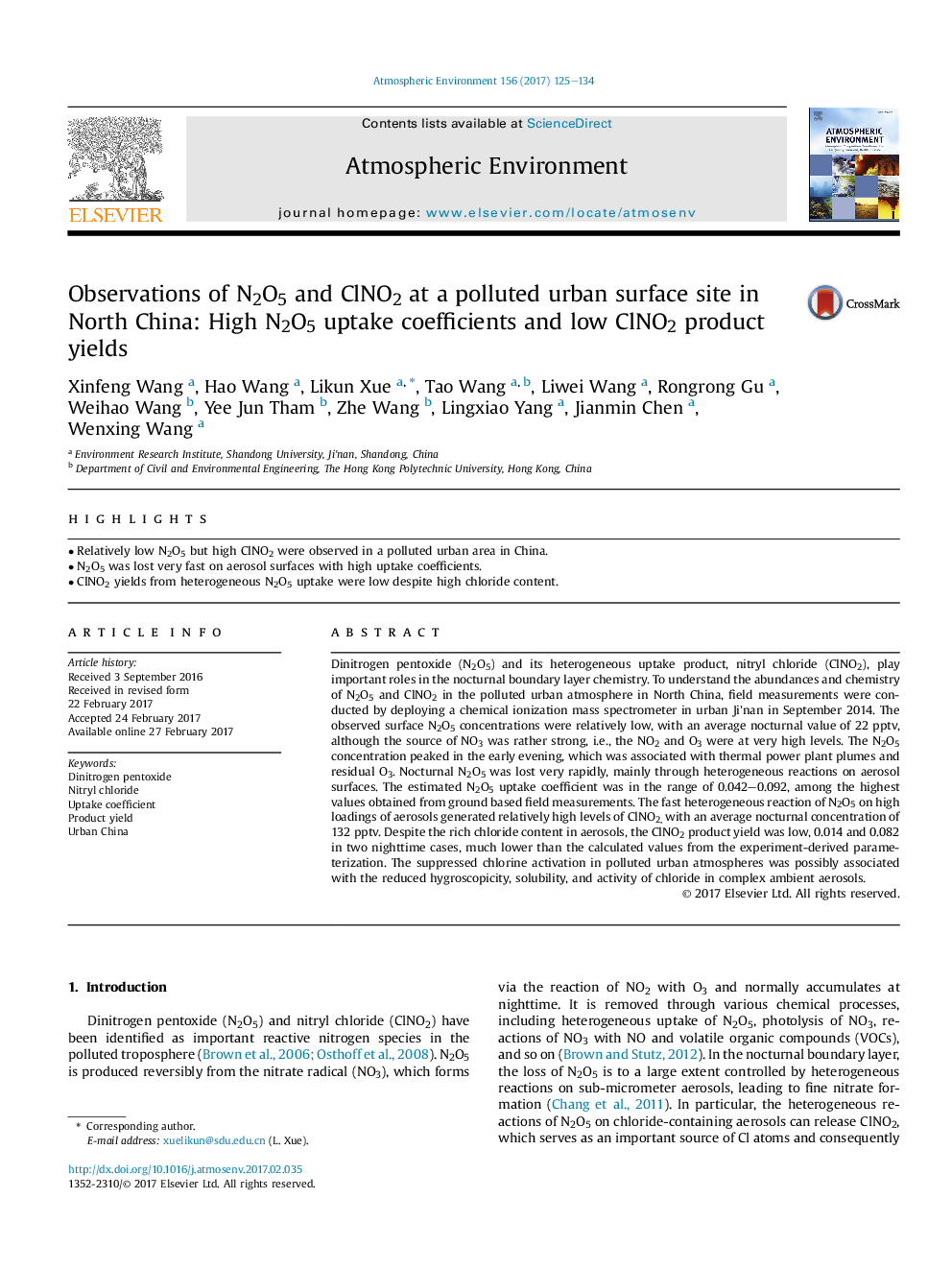| Article ID | Journal | Published Year | Pages | File Type |
|---|---|---|---|---|
| 5752994 | Atmospheric Environment | 2017 | 10 Pages |
Abstract
Dinitrogen pentoxide (N2O5) and its heterogeneous uptake product, nitryl chloride (ClNO2), play important roles in the nocturnal boundary layer chemistry. To understand the abundances and chemistry of N2O5 and ClNO2 in the polluted urban atmosphere in North China, field measurements were conducted by deploying a chemical ionization mass spectrometer in urban Ji'nan in September 2014. The observed surface N2O5 concentrations were relatively low, with an average nocturnal value of 22 pptv, although the source of NO3 was rather strong, i.e., the NO2 and O3 were at very high levels. The N2O5 concentration peaked in the early evening, which was associated with thermal power plant plumes and residual O3. Nocturnal N2O5 was lost very rapidly, mainly through heterogeneous reactions on aerosol surfaces. The estimated N2O5 uptake coefficient was in the range of 0.042-0.092, among the highest values obtained from ground based field measurements. The fast heterogeneous reaction of N2O5 on high loadings of aerosols generated relatively high levels of ClNO2, with an average nocturnal concentration of 132 pptv. Despite the rich chloride content in aerosols, the ClNO2 product yield was low, 0.014 and 0.082 in two nighttime cases, much lower than the calculated values from the experiment-derived parameterization. The suppressed chlorine activation in polluted urban atmospheres was possibly associated with the reduced hygroscopicity, solubility, and activity of chloride in complex ambient aerosols.
Related Topics
Physical Sciences and Engineering
Earth and Planetary Sciences
Atmospheric Science
Authors
Xinfeng Wang, Hao Wang, Likun Xue, Tao Wang, Liwei Wang, Rongrong Gu, Weihao Wang, Yee Jun Tham, Zhe Wang, Lingxiao Yang, Jianmin Chen, Wenxing Wang,
